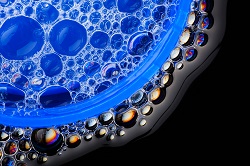Nanophotonic antennas unveil the nanoscale mechanisms of disease
Observing biological processes in the living cell is pretty much the holy grail of molecular and cell biologists. These processes – which involve interactions between molecules at the nanometre scale – are very difficult to visualise with current imaging technology, and the same also goes for interactions between proteins, nucleic acids or enzymes. ‘There are many examples of the limitations of current technology,’ says Dr Maria Garcia-Parajo, coordinator of the NANO-VISTA (Advanced photonic antenna tools for biosensing and cellular nanoimaging) project and Group Leader at ICFO in Spain. ‘For instance, we have a limited acknowledge of how receptors organise in cell membrane. This is a fundamentally important question since cells in our body communicate with each other and with their extracellular milieu through a multitude of receptors expressed on the cell surface, enabling them to perform specialised functions.’ Evidence also exists that aberrant changes in organisation and dynamics of cell surface receptors are the source of an overwhelming number of diseases such as cancer, neurological and neurodegenerative diseases, auto-immune disorders and pathogenic infections. ‘Visualising these events taking place at the nanometre level and over different temporal scales in real-time requires imaging techniques with an ultra-high level of resolution,’ Dr Garcia-Parajo continues. A super-resolution of sorts. Dr Garcia-Parajo and her team believe the solution lies in photonic nano-antennas – intense nanoscale hotspots of illumination that can be used to image a sample at a scale of around 20nm and probe interactions between molecules. Whilst these are not the only route to super-resolution, other forms of super-resolution microscopy rely on very specific fluorescent labels. They might therefore not reach the full spectrum of biological applications, a limitation that photonic antennas do not suffer from. Additionally, these antennas can be used in combination with other techniques such as fluorescence correlation spectroscopy to provide a microsecond time resolution. Whilst the physics of nano-antennas were already well-mastered, NANO-VISTA is the first successful attempt to bring them into the realm of biology thanks to innovative designs. Dr Garcia-Parajo details the process that led to this breakthrough: ‘We devised novel routes for the fabrication of large scale arrays of antennas so that we could interrogate at the nanoscale multiple cells coping with their inherent heterogeneity. We did this while keeping in mind designs that would provide high reproducibility on the optical performance of the antennas, scalability to fabricate thousands on antennas in a single substrate, re-usability and low cost. Finally, we combined these nanostructures with novel forms of fluorescence spectroscopy to provide not only spatial but also importantly, ultrahigh temporal resolution.’ The results of demonstrations run under the project were outstanding. The team notably showcased single biomolecule (DNA & different proteins) detection in zepto-liters illumination volumes, enhanced the fluorescence signal from individual molecules by factors 105 times larger than the emission of a single molecule when excited by conventional confocal illumination, revealed excitonic coupling in individual light harvesting complexes, and collaborated with immunologists to provide insights into the processes of immune cell adhesion and migration. Several collaborations were already initiated with major industry players worldwide, notably in the USA, India, the UK and Spain. In the crosshairs: NANO-VISTA technology exploitation in cell membrane biology and cell signalling, integration in standard microscopes, or high-throughput screening platforms for rapid testing of specific antibodies, ligand interactions or even drugs. Side-products are being prepared for future commercialisation, although full commercialisation of all project outcomes still poses some challenges. ‘The NANO-VISTA consortium is very much alive,’ Dr Garcia Parajo enthuses. ‘NANO-VISTA has provided the means to go down to the nanoscale with microsecond time resolution. Now, we need to interlace this information with micro- and meso-scale imaging on single cells and cell populations. Hopefully new sources of funding from the European Commission will permit this dream to come true.’
Keywords
NANO-VISTA, photonics, nano-antenna, molecules, living cell, nanoimaging, microscopy, biotechnology, spectroscopy, photonic antennas, nanostructure



